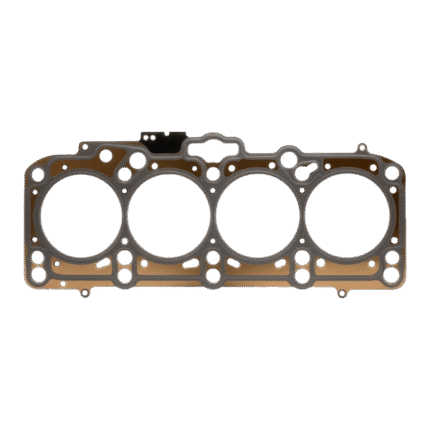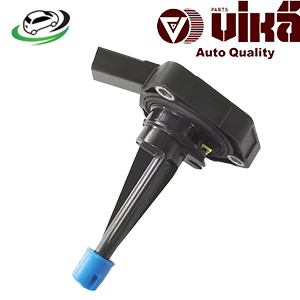Get VW Jetta VI Sedan Facelift 1.4T/ VW Jetta VII Sedan 1.4T Oil Level Sensor 04E907660
An oil level sensor is an essential component in modern internal combustion engines and some electric vehicles, designed to monitor the oil level within the engine’s oil pan. By providing real-time information about oil levels, these sensors help ensure proper engine lubrication, optimize performance, and prevent potential damage. This article will explore the functions, types, benefits, common issues, and maintenance of oil level sensors in detail.
1. What is an Oil Level Sensor?
An oil level sensor is an electronic device that measures the amount of oil in an engine’s oil pan. It typically consists of a float, conductive level sensing technology, or capacitive sensors that determine the oil level and send signals to the vehicle’s engine control unit (ECU) or dashboard display. The sensor plays a vital role in maintaining proper lubrication by alerting the driver when oil levels are low, thus helping to prevent engine damage.
2. Function of an Oil Level Sensor
The primary functions of an oil level sensor include:
1. Monitoring Oil Levels
- The main purpose of an oil level sensor is to continuously monitor the oil level within the oil pan. It ensures that the engine has adequate oil for lubrication, which is critical for optimal performance.
2. Preventing Engine Damage
- By providing timely information about oil levels, the sensor helps prevent scenarios where the oil level drops too low, which can lead to inadequate lubrication and potential engine damage due to overheating or excessive wear.
3. Providing Alerts
- When the oil level drops below a certain threshold, the oil level sensor sends a signal to the ECU, which can trigger a warning light on the dashboard, alerting the driver to check the oil level.
4. Improving Maintenance
- The data provided by the oil level sensor can be used to determine when an oil change is needed, as low oil levels may indicate that oil is being consumed or leaked, prompting further investigation.
3. Types of Oil Level Sensors
There are several types of oil level sensors, each with its unique method of measuring oil levels:
1. Float-type Sensors
- Description: These sensors use a float that rises and falls with the oil level. As the float moves, it activates a switch that signals the ECU whether the oil level is adequate.
- Applications: Commonly used in many vehicles due to their simplicity and reliability.
2. Capacitive Sensors
- Description: Capacitive oil level sensors measure the dielectric constant of the oil. When the oil level changes, the capacitance changes, allowing the sensor to determine the oil level accurately.
- Applications: Often found in more modern vehicles where precise measurements are required.
3. Resistive Sensors
- Description: These sensors utilize the principle of resistance to measure oil levels. As the oil level changes, the resistance changes, which is detected and converted into a signal for the ECU.
- Applications: Used in various applications, though less common than float and capacitive sensors.
4. Ultrasonic Sensors
- Description: Ultrasonic sensors use sound waves to measure the distance to the oil surface. By calculating the time it takes for the sound waves to return, the sensor can determine the oil level.
- Applications: Often used in specialized applications where high accuracy is required.
4. Benefits of an Oil Level Sensor
An oil level sensor provides several key advantages that contribute to engine performance and reliability:
1. Enhanced Engine Protection
- By continuously monitoring oil levels and providing alerts, oil level sensors help protect the engine from potential damage due to low oil levels.
2. Improved Efficiency
- Maintaining proper oil levels ensures optimal lubrication, which can improve engine efficiency and performance, leading to better fuel economy.
3. Reduced Maintenance Costs
- Early detection of low oil levels allows for timely intervention, potentially reducing the risk of major repairs and maintenance costs.
4. Driver Awareness
- The presence of an oil level sensor improves driver awareness regarding oil maintenance, promoting proactive care and preventing issues before they arise.
5. Environmental Benefits
- Proper oil levels contribute to cleaner combustion, reducing harmful emissions and benefiting the environment.
5. Common Problems with Oil Level Sensors
While oil level sensors are designed to be reliable, they can encounter issues over time. Some common problems include:
1. Faulty Sensor
- A malfunctioning sensor may provide inaccurate readings, leading to false warnings or failure to detect low oil levels. This can result in engine damage if not addressed promptly.
2. Clogged Oil Pathways
- Oil sludge or contaminants can clog the sensor, preventing it from functioning correctly. Regular oil changes can help mitigate this issue.
3. Wiring Issues
- Damaged or corroded wiring can affect the sensor’s ability to communicate with the ECU, leading to intermittent or incorrect readings.
4. Oil Leaks
- If the oil level is consistently low, it may indicate an oil leak, which could lead to sensor malfunction and engine damage if not repaired.
6. Symptoms of a Failing Oil Level Sensor
Recognizing the symptoms of a failing oil level sensor is crucial to prevent engine problems:
1. Check Engine Light
- A malfunctioning oil level sensor can trigger the check engine light, indicating a problem that requires attention.
2. Inaccurate Oil Level Readings
- If the oil level sensor provides erratic or incorrect readings, it may signal that the sensor is faulty or clogged.
3. Oil Pressure Warning Light
- If the oil level is too low and the sensor fails to detect it, the oil pressure warning light may illuminate, indicating a potential issue.
4. Strange Engine Noises
- Insufficient oil levels can lead to increased friction and unusual noises from the engine, such as knocking or grinding.
5. Oil Leaks
- If there are visible oil leaks, it may indicate a failing oil level sensor or other issues that need to be addressed.
7. Maintenance Tips for Oil Level Sensors
Regular maintenance of oil level sensors is crucial for optimal performance and longevity:
1. Regular Inspections
- Check the oil level sensor during routine maintenance to ensure it is functioning correctly. Look for signs of damage or wear.
2. Monitor Oil Levels
- Regularly check the engine oil level using the dipstick. Ensure that the oil level is within the recommended range, and address any issues promptly.
3. Change Oil Regularly
- Follow the manufacturer’s recommendations for oil changes. Clean oil helps maintain the proper functioning of the oil level sensor.
4. Check Wiring and Connections
- Inspect the wiring and connections to the oil level sensor for damage or corrosion. Repair or replace as needed to ensure reliable operation.
5. Use Quality Oil
- Use high-quality oil that meets the manufacturer’s specifications. This helps prevent sludge buildup and keeps the oil level sensor functioning properly.
Conclusion
The oil level sensor is a vital component in ensuring the health and longevity of an internal combustion engine. By continuously monitoring oil levels and providing real-time data to the engine control unit, these sensors help protect against potential engine damage, enhance performance, and improve fuel efficiency. Understanding the functions, types, benefits, and common issues associated with oil level sensors is essential for vehicle owners and automotive enthusiasts alike. Regular maintenance and prompt attention to warning signs can help ensure that the oil level sensor operates effectively, contributing to a smoother and more reliable driving experience.
Follow us on Facebook for more parts.




Reviews
Clear filtersThere are no reviews yet.